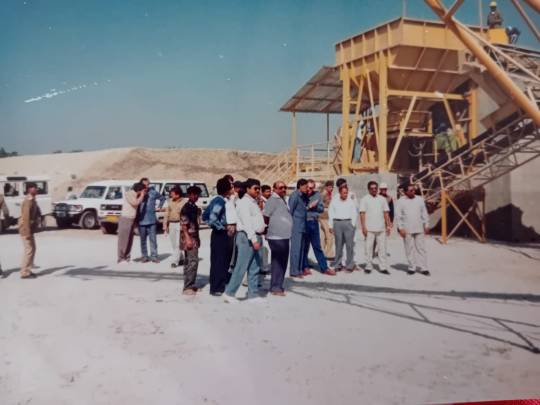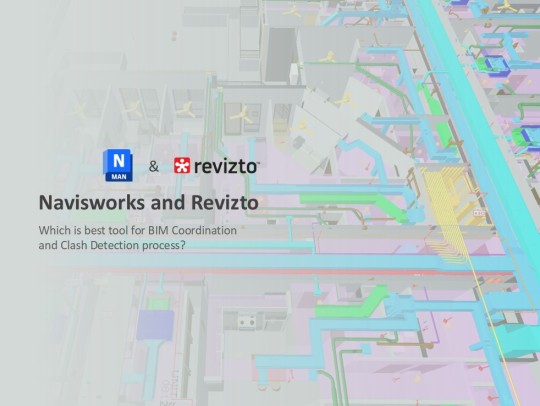#takeoff software tools
Explore tagged Tumblr posts
Text
Takeoff Software: Essential Construction Tools for Accurate Estimations
Explore the power of takeoff software in construction, designed to deliver precise material and cost estimates. These tools enhance project accuracy, streamline planning, and improve efficiency, ensuring successful project execution from start to finish for construction professionals.
#takeoff software tools#construction estimating#takeoff in construction estimating#ai construction estimating#construction scheduling
0 notes
Text
What Is the Most Accurate Building Cost Estimator?
Introduction
“I’m planning to build a home — but how do I even begin to estimate the cost?”
Whether you're a homeowner preparing for your dream build or a builder quoting projects regularly, estimating construction costs is one of the most important decisions you’ll make.
A good estimate gives you:
Budget clarity
Tender confidence
Control over financial risk
And peace of mind
In this guide, we’ll walk you through how to estimate building construction costs in Australia — the professional way — and show you how to avoid common pricing mistakes that lead to budget blowouts.
Step-by-Step: How to Estimate Construction Costs
1. Review Your Plans and Project Scope
It all starts with your architectural drawings and project brief.
You need to know:
The number of floors
Types of materials and finishes
Special features (basements, custom cabinetry, solar, etc.)
Site conditions (sloped block? access issues?)
Tip: The more detailed your plans, the more accurate your estimate.
2. Perform a Quantity Takeoff
A takeoff involves measuring the quantities of all materials and labour required. For example:
Cubic meters of concrete
Square meters of tiling
Lineal meters of cornice
Number of power points
Tools we use: PlanSwift, Cubit, Bluebeam Revu These tools make it fast, precise, and export-ready.
3. Apply Local Material & Labour Rates
This is where accuracy matters most. Use:
Local supplier prices (Bunnings, Reece, CSR)
Labour benchmarks for your city or region
Equipment hire and logistics (cranes, scaffolding, skips)
Example: Bricklaying costs in Melbourne are not the same as in regional WA.
4. Add Overheads, Contingency, and Builder’s Margin
Even the best projects come with surprises.
Include:
Supervision and admin costs
Permits and insurance
5–10% contingency
10–20% builder’s margin
Failing to include these = profit loss or client disputes later.
5. Deliver a Professional BOQ or Estimate Report
Wrap everything into a Bill of Quantities (BOQ) or a detailed cost breakdown.
Your final estimate should include:
Materials and labour
Subcontractor pricing
Trade-by-trade cost structure
Notes for variations
At AS Estimation & Consultants, our BOQs are:
Tender-ready
Bank/loan-ready
Format-compatible for builders, architects, and developers
Real Example
Project: Single-storey home in Brisbane Size: 200m² | Build Type: Brick veneer Estimation Process Output:
$2,300/m² × 200 = $460,000
5% contingency = $483,000
15% margin = $555,450
Online calculator showed $410,000 — missing site costs and labour uplift.
FAQs
1. Can I estimate my own building costs?
Yes — but only to a rough extent. A professional estimator provides accuracy, risk coverage, and compliance.
2. What is a takeoff?
It’s a detailed measurement of all required construction quantities — from concrete to tiles.
3. How accurate is a BOQ?
With professional software and real pricing, our BOQs are within 3–5% of actual build cost.
4. What if I don’t have full plans yet?
We can provide preliminary estimates based on concept drawings and assumptions — great for feasibility studies.
5. Can I use your estimate for my bank or tender?
Absolutely. Our estimates are used for loan approvals, builder quotes, and developer tenders.
Final Thoughts
Don’t guess your way through a six-figure construction project. Estimating is part science, part experience, and part negotiation — and it’s worth doing right the first time.
When you work with AS Estimation & Consultants, you’re working with professionals who:
Use licensed software
Know your local construction market
Deliver fast, formatted, reliable BOQs
#how do I estimate building construction costs#estimating construction cost step by step#how to do a takeoff for construction#what does a professional estimate include#cost to build a house in Brisbane 2025#BOQ example for home building#how much do builders charge per m2#cost estimating vs budgeting in construction#building estimate template Australia#can I estimate building costs from plans#software for estimating builders use#PlanSwift estimating workflow#how to avoid cost overruns in construction#calculating contingency in construction#how to price custom homes#difference between BOQ and quote#estimating tools for subcontractors#how long does an estimate take#what is included in building takeoff#get a BOQ for loan#estimator vs builder quote#how to prepare an estimate for a duplex#renovation cost estimating methods#estimating construction costs in rural Australia#uploading plans for cost estimate#Cubit vs Bluebeam accuracy#quantity surveying vs estimating#real cost to build per square metre#accurate pricing for house plans#estimating labour and material rates Australia
0 notes
Text
Cloud-Based BIM: Transforming the AEC Industry

Building Information Modeling (BIM) has significantly transformed the Architecture, Engineering, and Construction (AEC) industry by improving project visualization, coordination, and overall efficiency. However, the integration of cloud computing has taken BIM to an entirely new level by enabling real-time collaboration, data accessibility, and seamless project management. Cloud-based BIM allows stakeholders, including architects, engineers, and contractors, to access and work on BIM models from anywhere, ensuring streamlined workflows and enhanced communication. This blog explores the key benefits, challenges, and future implications of cloud-based BIM solutions.
How Cloud-Based BIM Benefits Architects, Engineers, and Contractors
Cloud-based BIM offers many advantages to professionals in the AEC industry. Here’s how it helps:
1. Real-Time Collaboration
Before cloud-based BIM, architects, engineers, and contractors had to send files back and forth, often leading to confusion over which version was the latest. With cloud-based BIM, multiple users can work on the same model at the same time, ensuring that everyone has access to the most up-to-date information. This reduces errors and saves time.
2. Increased Efficiency and Productivity
When all project data is stored in one place and updated in real-time, tasks such as clash detection, design reviews, and coordination become much faster and more efficient. Cloud-based BIM eliminates the need for manual file transfers and speeds up decision-making, allowing teams to complete projects more quickly and accurately.
3. Cost Savings
Setting up traditional BIM systems requires expensive servers and IT maintenance. With cloud-based BIM, companies can use subscription-based services instead of investing in costly infrastructure. This is especially beneficial for small and medium-sized firms that need flexible, budget-friendly solutions.
4. Access from Anywhere
With cloud-based BIM, professionals can access project models and data from any device with an internet connection. Whether working from the office, on-site, or remotely, users can view and edit BIM models in real-time, making project management more flexible and efficient.
How Cloud-Based BIM Enhances Real-Time Collaboration and Coordination
One of the most powerful features of cloud-based BIM is its ability to enhance real-time collaboration and coordination among project stakeholders. Unlike traditional BIM workflows, where files must be manually shared and updated, cloud-based BIM ensures that updates are instantly reflected for all team members. This reduces the chances of miscommunication and allows for more efficient decision-making.
Cloud-based BIM platforms also offer automated clash detection, helping teams identify and resolve conflicts in the design phase before they become costly issues during construction. Additionally, these platforms integrate with various design and construction software, such as Revit, AutoCAD, and Navisworks, ensuring interoperability and smoother workflows.
Top Cloud-Based BIM Platforms: Features and Comparisons
There are several cloud-based BIM platforms available today, each offering unique features designed to meet the needs of AEC professionals. Some of the most popular solutions include:
Autodesk Construction Cloud – A unified platform combining BIM 360, Autodesk Build, Autodesk Takeoff, and other tools to streamline workflows, enhance collaboration, and improve construction project outcomes.
Autodesk BIM 360 – A comprehensive BIM platform that offers cloud storage, real-time collaboration, and project insights. It seamlessly integrates with Autodesk products like Revit and Navisworks.
Trimble Connect – Designed for construction and design professionals, Trimble Connect provides collaboration tools that enhance communication and coordination. It integrates with SketchUp and Tekla.
Graphisoft BIMcloud – A solution specifically designed for Archicad users, Graphisoft BIMcloud enables real-time model synchronization and version control.
Newforma Konekt – Focused on issue tracking and coordination management, “Newforma Konekt” was earlier known as “BIM Track” which improves communication between stakeholders and enhances project efficiency.
Procore – A widely used construction management software that offers BIM integration, document management, scheduling, and real-time collaboration, helping teams improve project efficiency and reduce errors.
Each of these platforms provides distinct advantages, allowing firms to choose a solution that best fits their project requirements.
Data Security and Privacy in Cloud-Based BIM Workflows
Data security is a significant concern when adopting cloud-based BIM solutions. To ensure secure workflows, leading cloud BIM providers implement robust security measures such as end-to-end encryption, which protects data during transmission and storage. Additionally, role-based access control (RBAC) ensures that only authorized personnel have access to sensitive project information, minimizing the risk of unauthorized access.
Regular backups are another critical aspect of cloud-based BIM security. These backups prevent data loss in the event of system failures or cyberattacks. Furthermore, compliance with industry standards such as ISO 19650 ensures that cloud-based BIM solutions meet stringent data management and security protocols.
Cloud-Based BIM for Remote Project Management and Site Coordination
Remote project management has become increasingly essential in the construction industry, and cloud-based BIM plays a pivotal role in enabling it. With live site updates, contractors and project managers can access the latest construction models from the field, eliminating the need for constant physical meetings or manual data transfers.
Cloud-based BIM also supports issue reporting and tracking, allowing stakeholders to document and resolve design changes in real-time. This enhances communication between site teams and design offices, ensuring that all project participants are aligned with the latest developments.
The Role of AI and Automation in Cloud-Based BIM Solutions
Artificial Intelligence (AI) and automation are playing an increasingly important role in cloud-based BIM solutions. AI-driven capabilities such as automated clash detection help detect design inconsistencies early, reducing rework and improving project accuracy. Predictive maintenance powered by AI analytics can foresee potential construction issues and suggest preventive measures, leading to better project outcomes.
Generative design, another AI-driven innovation, allows architects to create optimized design models based on specific constraints and project goals. This not only accelerates the design process but also results in more efficient and innovative building solutions.
Cloud-Based BIM vs. Traditional BIM: A Comparative Analysis
When comparing cloud-based BIM to traditional BIM, several key differences emerge. Traditional BIM relies on local servers and manual file-sharing, whereas cloud-based BIM provides real-time multi-user collaboration with centralized data storage. The cost factor also differs significantly, as traditional BIM setups require high infrastructure investments, while cloud-based BIM operates on a subscription model, making it more affordable.
Another critical difference is software updates. Traditional BIM requires manual installations and periodic updates, whereas cloud-based solutions receive automatic updates, ensuring users always have access to the latest features and security patches.

Challenges and Considerations When Adopting Cloud-Based BIM
While cloud-based BIM offers numerous benefits, it also presents certain challenges. One of the primary concerns is internet dependency, as a stable and high-speed internet connection is essential for smooth operation. In locations with limited connectivity, this can become a barrier to adoption.
Data security concerns also persist, as cloud-based systems are potential targets for cyberattacks. Firms must ensure they use secure platforms with encryption and access control mechanisms to mitigate these risks. Additionally, a learning curve exists for professionals unfamiliar with cloud-based workflows, requiring training and adaptation efforts.
Integration with existing systems can also be challenging, particularly for firms that use legacy BIM software. Ensuring seamless compatibility and data transfer between old and new systems is crucial for a successful transition.
The Future of Cloud-Based BIM
Blockchain for Security and Data Integrity Blockchain technology will improve BIM by providing a decentralized, tamper-proof ledger for storing and verifying data. This enhances transparency, data integrity, and security, ensuring traceability in design changes and streamlining project approvals and payments through smart contracts.
5G Connectivity for Real-Time Collaboration 5G will enable ultra-fast, low-latency data transfers, allowing real-time collaboration on large BIM files. This will improve remote access to BIM models, support AI and IoT integration, and make cloud-based BIM more accessible to firms of all sizes.
IoT for Smart Construction IoT sensors will provide real-time data on construction sites, monitoring parameters like structural integrity, energy usage, and safety. Integrating IoT with BIM will enable predictive maintenance, improve safety, and enhance productivity by optimizing material and equipment usage.
VR and AR for Immersive BIM Experiences Virtual Reality (VR) will allow stakeholders to walk through BIM models in 3D before construction begins, aiding design validation. Augmented Reality (AR) will overlay BIM models onto real-world sites for better coordination and reduced errors, enhancing stakeholder engagement and project accuracy.
AI and Machine Learning for Predictive Analytics AI and machine learning will analyze BIM data to predict delays, cost overruns, and automate tasks like clash detection. These technologies will also generate optimized designs, reducing material waste and improving decision-making for more efficient project delivery.
Sustainability and Carbon Tracking in BIM Cloud-based BIM will help reduce carbon footprints by integrating tools for automated carbon footprint analysis and real-time environmental impact tracking. This will assist in selecting eco-friendly materials and ensuring compliance with green building standards, promoting sustainable construction practices.
Conclusion
In conclusion, cloud-based BIM is changing the way construction projects are managed and executed. Unlike traditional methods, cloud-based BIM allows project teams to work together in real time, no matter where they are located. This means architects, engineers, and contractors can access and update project information instantly, leading to better collaboration and fewer mistakes.
One of the biggest advantages of using cloud-based BIM is the ability to store all project data in one central location that everyone can access. This makes it easier to share important documents, plans, and updates, which helps to avoid delays and miscommunications. Teams can also track progress more effectively and quickly spot any potential issues before they become problems.
Another key benefit is the cost savings and flexibility it offers. Cloud-based solutions don’t require expensive hardware or software, as everything can be accessed online. This helps businesses save money while still benefiting from powerful tools. Plus, as cloud storage is scalable, businesses can increase or decrease their usage depending on project needs, making it a flexible solution for all types of projects.
Overall, cloud-based BIM is making construction projects more efficient, collaborative, and cost-effective. As technology continues to advance, it will become an even more important tool for businesses that want to stay competitive and deliver high-quality projects on time and within budget.
#CloudBasedBIM#CloudBasedBIMBenefitsArchitects#CloudBasedBIMChallenges#CloudBasedBIMBenefitsContractors#Cloudbasedarchitecturemodel
1 note
·
View note
Text
Planning and estimating construction projects are crucial to their success. There are many complex processes involved. As part of this process, construction takeoffs are essential. Construction takeoffs are itemized and quantified lists of the materials, labor, and other resources required for construction projects.
Construction takeoffs are essential to project estimation, planning, and success in general. They give a thorough analysis of the necessary labor, materials, and resources, allowing for precise cost estimation and efficient project management. With enhanced accuracy and time savings, the process has been further streamlined with the introduction of digital takeoff tools and BIM-based solutions.
Importance of Construction Takeoffs
Accurate project estimation
Accurate project estimation is built on the foundation of construction takeoffs. Takeoffs give project stakeholders a thorough grasp of the project scope and associated costs by estimating the materials, equipment, and labor required. Realistic timetables and budgets can be created with the use of this information.
Enhanced project planning
A crucial aspect of project planning is takeoffs. Construction teams may create accurate project timetables, manage resources wisely, and spot potential bottlenecks or areas that need extra care with a full assessment of the available resources. This degree of planning ensures that the construction process runs more smoothly and helps to avoid delays and expensive change orders.
Improved communication and collaboration
Communication among project stakeholders is standardized by construction takeoffs. Takeoffs allow for simple and clear communication between architects, contractors, suppliers, and other team members by quantifying and clarifying requirements. This promotes teamwork and increases overall project efficiency by cutting down on ambiguity and errors.
Methods for Construction Takeoffs
Manual takeoffs
Traditional manual takeoffs entail looking at blueprints, plans, and specifications to manually calculate the amount of resources and materials needed. Even though it takes a lot of time and is prone to mistakes, this method is still employed occasionally, especially for smaller projects or when digital versions of certain details are not available.
Digital takeoff software
The building sector has undergone a change since the introduction of digital takeoff software. By eliminating laborious computations and lowering human error, these software solutions allow users to electronically measure quantities directly from digital designs. Software for digital takeoffs streamlines the process by providing features like annotation tools, automatic measurements, and simple cooperation.
3D modeling and BIM
The building sector has undergone a change since the introduction of digital takeoff software. By eliminating laborious computations and lowering human error, these software solutions allow users to electronically measure quantities directly from digital designs. Software for digital takeoffs streamlines the process by providing features like annotation tools, automatic measurements, and simple cooperation.
Read more
3 notes
·
View notes
Text
Revit Architecture Online Training - cubikcadd

Revit Architecture Online Training - cubikcadd
In today’s fast-paced design and architecture world, staying ahead of the curve requires mastering the right tools. One of the most powerful and widely used software platforms for architects, engineers, and construction professionals is Autodesk Revit. If you’re serious about elevating your skills and advancing your career, enrolling in a Revit course can be a game-changer. This blog will explore the benefits of taking a Revit course, what you can expect to learn, and why it's essential for anyone in the design industry.
What Is Revit?
Revit is a Building Information Modeling (BIM) software developed by Autodesk that allows architects, engineers, and construction professionals to design, visualize, and manage building projects in a 3D environment. Unlike traditional CAD software, Revit is more than just a drawing tool. It enables users to create intelligent models with real-world information about materials, structures, and systems, providing a holistic approach to design and construction.
Why Take a Revit Course?
A Revit course is crucial for professionals who want to maximize their productivity and accuracy in design. Here are a few key reasons why learning Revit is a smart investment in your future:
1. Industry Standard
Revit is an industry-standard BIM software widely used in architectural firms, engineering companies, and construction projects worldwide. Employers often seek professionals proficient in Revit, making it a valuable skill on your resume.
2. Improve Design Efficiency
Revit allows you to work smarter, not harder. By learning how to use the software’s advanced features, such as parametric modeling and automatic updates across the project, you can significantly reduce the time spent on revisions and manual updates.
3. Enhance Collaboration
Revit supports team collaboration with ease. A Revit course will teach you how to work with cloud-based models, enabling multiple users to access, modify, and update a single project file in real-time. This is especially important in large projects where coordination between different disciplines (architecture, structural engineering, MEP) is crucial.
4. Create Detailed 3D Visualizations
One of the standout features of Revit is its ability to generate highly detailed 3D models and visualizations. By enrolling in a Revit course, you’ll learn how to create photorealistic renders, walkthroughs, and simulations, helping you and your clients better understand the design before construction even begins.
5. Better Project Management
Revit’s intelligent data system ensures that every part of your model is interconnected. This allows for accurate cost estimates, material takeoffs, and construction timelines. A Revit course will show you how to use these tools to improve project management, ensuring projects stay on time and within budget.
What Will You Learn in a Revit Course?
From basic to advanced, a well-designed Revit course usually covers a wide range of topics. The following summarises what you can anticipate learning:
1. Introduction to BIM and Revit Interface
You’ll start by getting familiar with BIM concepts and the Revit interface. This includes learning about tools, menus, and how to navigate the software efficiently.
2. Modeling Techniques
The course will teach you how to create accurate architectural models, including walls, floors, roofs, doors, and windows. You’ll also learn how to model structural components and MEP systems, depending on the course's focus.
3. Documentation and Annotations
Learn how to generate construction documentation, such as floor plans, sections, elevations, and details. You’ll also cover how to annotate your drawings with dimensions, text, and other symbols necessary for clear communication with contractors and clients.
4. Advanced Modeling and Customization
Once you master the basics, you’ll dive into more advanced topics such as custom family creation, curtain wall systems, complex roofs, and parametric design, which allows you to create flexible models.
ph : +91-9500024134
Visit our website: https://www.cubikcadd.in/revit-training-in-coimbatore.html
Ramnagar Branch, Coimbatore : https://maps.app.goo.gl/boAyupUoqtda9fXU6
Saravanampatti Branch, Coimbatore : https://maps.app.goo.gl/xrtknmSk76d8cnQV9
OMR Branch, Chennai : https://maps.app.goo.gl/HCpHhcFHGdKsPCPx7
Facebook: https://www.facebook.com/cubikcadd
Instagram: https://www.instagram.com/cubikcadd/
Tiwtter: https://x.com/CubikCadd
2 notes
·
View notes
Text
Good morning TUMBLR - March 12th - 2024
''Mr. Plant has owed me a shoe since July 5, 1971."
DINAJPUR – PANCHAGAR ROAD REHABILITATION PROJECT - BANGLADESH 1992



At the beginning of January I was called by the San Donato Head Office office, where SNAMPROGETTI proposed my return to Saudi e Al Jubail petrochemical project. I didn't intend to return to that country so soon. Therefore I asked if there were any alternatives, but was told that at that moment it was ''Saudi or nothing''. I said thanks, it will be for another time.
Faced with the ''either Al Jubail or nothing'' I accepted the invitation for an interview first, and than for the assignment by BONATTI Parma. They had a project in Bangladesh to propose for me. To tell the truth, it was an unusual project for BONATTI. The rehabilitation of a road, specifically the 84 km that linked Dinajpour to Panchagar, in the North of the country. The work was part of an aid package that the Italian Ministry of Foreign Affairs intended to implement in Bangladesh through the Italian Cooperation Fund.
Before my departure to Bangladesh, Mr. Romitelli (Deus ex Machina of BONATTI) told me:
''You have to come to Parma for a couple of days to familiarize yourself with the ROADCALC software, the tool with which the project's accounting will be done''.
''Ok fine – I replied – I'll be there. In fact I went to the BONATTI Parma headquarters, I met with their IT Manager who took me to his office, throw a package with 5 CDs on the desk, and told me:
That's it, take them and .............now you can go!
Thanks a lot Sir - I answered -and goodbye!! And this was the ''training course'' BONATTI gave me in order ''familiarize myself with the calculation program''.
JOURNEY TO BANGLADESH I left Italy in early October, and it was still hot when in Rome Fiumicino we were taken by airport shuttle bus under the DC10 of BIMAN, the national airline of Bangladesh. The flight schedule included a stopover in Dubai, and than would arrive in Dakha after another 5 hours. I noticed some alpinists boarding the plane with us: judging by their clothes and boots they were wearing, their final destination was undoubtedly the Himalayas. Nevertheless, I thought, why wearing such heavy clothes in warm Rome's autumn?
Again: why had they brought crampons, ropes, ice axes and other climbing items into the cabin (perhaps to save on extra baggage?)
Anycase we had been sitting inside the plane for almost one hour, but still takeoff did not take place. Finally the Captain spoke on the loudspeaker and told us that the loading service was unable to introduce a pallet with some items into the hold. To entertain us while we waited, the cabin crew distributed a snack: a toast bread stuffed with one slice of cheese and a leaf of green salad! (And a glass of water.....). ''What a great start......'' I told myself'' - but the best was yet to come. After more than an hour, the loading operations were completed, and the pallet was left on the ground. Than the plane took off. Normal takeoff, aircraft at flight altitude. About an hour passed, and from the window I saw some snow-capped mountains: I wondered what chain it could have been, given that a normal route to the Middle East should not have flown over snow-capped mountains in that period. Another hour passed, and the Captain kindly informed us:
We like inform passengers that we have begun the descent to Frankfurt airport, fasten your seat belts…etc…etc.
But ......why Frankfurt? I ask the stewardess – weren't we supposed to go directly to Dubai?
Yes – she tells me – but then we were late and then it was decided to go to Frankfurt to pick up some passengers.
Ahh…ok….sure we're travelling on airplane? Not in a city bus?
She smiled and went away without replying........ With now the plane approaching the landing, Captain spoke again:
Hallo.......Here your Captain speaking - we were warned by Frankfurt airport control tower that the persistent fog does not allow landing at the moment, therefore we remain at altitude nearby awaiting for instructions. Another good half an hour passed like that, while we flew in circles over Germany. And than the ''Our Dear Captain' said:
''The Frankfurt control tower warns that no clear weather is expected in the next few hours, so it has been decided that we're continuing our flight to London Heathrow''. LONDON HEATROW!! If we continue like that.....next announcement could be ''we've turned left, we're going to New York!. Anycase after 45 minutes safely landed at Heathrow!. Some passengers boarded and than the stewardess announced the plane would take off for Dubai in a few moments. We reached Dubai and it was already the dawn of a new day, and we were told to desambark becasue of refuelling operation will take place. As usual, inside Dubai airport it felt like being at the North Pole: the temperature was 16 degrees, definitely too low for an airport lounge. Then, with another 5 hours flight, eventually we reached Dakha, our final destination: 27 hours had passed since we left Rome!! The customs and immigration formalities were pretty quick – I came out of customs and saw a guy hoisting my name up on a board: he was the driver sent by Company Branch. He took my luggage and we started walking inside the airport, when I saw a group of people who seemed to be accompanying a tall and big man – when we were close enough, I noticed his hair and thick gray beard, his tortoiseshell glasses. , the perfect cut dress: Gian Franco Ferre', one of the great names in Italian fashion! Someone later explained to me the reason for Ferre' visit to Bangladesh: in Dhaka there was a ''Free Zone'' where big foreign groups had invested large capital and where no taxes were paid locally, as long as local manpower were employed (Which naturally cost very little). In this Free Zone all the big names in Italian fashion were present: in addition to GF Ferre', there were Valentino, D&G, Versace and few others. An elderly and still attractive Italian Lady who I later got to know, was in charge to manage all the production laboratories.
DAKHA GUEST HOUSE It took us a couple of hours to get to the Guest House: Traffic in Dhaka is a nightmare not only for cars and buses, but because of thousands of scooters and bicycles. The company Guest House was the former Italian Embassy. Italian diplomatic corps had recently moved to an even larger and more luxurious villa. Gulshan, the embassy area of Dakha is of course the most luxurious within the city, with large villas surrounded by tropical gardens. When we arrived I was so tired that I got into the bed without having any breakfast at all. In reality I had lost track of time, and I wasn't sure whether it was morning or afternoon or whatever........ Any case, I slept until the following noon without interruption. I was woken up by the housekeeper, who told me that lunch was served. Once at the table I met my two new Italian colleagues: one of them was in charge of customs and personnel, the second was in charge of the logistics of the construction sites. They gave me some informations regarding the project, and we had an excellent lunch prepared by the Bengali chef. Company office was located on the villa ground floor. Three local employees were present, and greeted me at the time I entered. Educated Bengali people are very polite.
TRANSFER TO THAKURGAON
The next day I left for Dinajpur in a domestic flight: about an hour by plane with an unbearable stench caused by the grease that the locals spread on their hair to make it ''shiny''. Upon arrival, another driver was waiting to take me to Thakurgaon, 60 km away from Dinajpour airport. I thus had the opportunity to see the conditions of the road that was the subject of our project. Some sections were really in bad shape, with deep potholes and bumpy asphalt - more worrying were the conditions of numerous bridges we crossed the frequent rivers and swamps: there would have been work to do!

My driver was chewing ''paan'' (a preparation that combines betel leaf with areca nut, which turns the tongue and teeth red-brown - In Bangladesh, paan is chewed throughout the country from all classes and is an important element of the country's culture).

In the world majority of the countries people drive on the right lane. There are others where left lane driving is established. (UK and former colonies in general). And than there is Bangladesh where people drive in the middle of the road! When two vehicle from different direction meet, the challenge is always the same: to maintain the center of the road until the other one moves onto the road shoulder… We arrived in Thakurgaon, and I found out it was a fairly tidy little town. BONATTI had built a compound of brick houses which essentially consisted of a bedroom and a bathroom: much better than the usual prefabricated sheet metal containers! There was a canteen-kitchen building, and one for offices. A tennis court and basket ball playground was also provided. All in a well-kept garden of palm trees and tropical flowers. And of course a spacious workshop for the maintenance of construction equipment. The compound housed 12 Italian expatriates, plus a dozen Filipinos and locals who worked with us, or belongs to Works Management. It was lunch time, and so at the table I got to know my new colleagues, starting with the Construction Site Manager Mr. Coda, originally from Biella - Italy - a man with West Africa background. The cook was Bengali, but the food was Italian, albeit with some local influences. In the afternoon I went with the Site Manager for a tour of the areas where work in progress, and than to visit the area where an Italian technician was assembling a plant for the production of aggregates, gravel and sand.

A Virtgen was also expected from Italy, a machine capable of ''eating'' existing asphalt and recycling it. In short, the work was interesting, with a lot of activities to be carried out along the 80 km of the road - the equipment available seemed excellent, and the staff capable. Objectively there were enormous logistical problems: difficulties in supplying fuel and spare parts - practically non-existent telecommunications, but we need to consider we were in North of Bangladesh, not beside Abu Dhabi......
ITALIAN CATHOLIC MISSIONARY HOSPITAL
After the settling-in period, I was told by Site Manager to investigate on the possibilities of emergency response in the event of employee's accident-illness. We had learned that about 40 km from Thakurgaon there was a hospital run by Italian Catholic missionaries, lost in the immense rainforest. So one day I went there. It was not easy to find the hospital location, given the total absence of road signs. I was welcomed by Father Rodolfo Albanese, originally from the province of L'Aquila. A man in his '60, whose goodness of spirit and the vicissitudes passed in more than 30 years of Bangladesh could be read on his face. He introduced me to the nuns who collaborated in the community - in addition to the building used as a hospital and the church, the compound had a school, a building where trades such as carpentry and crafts in general were taught. There was of course a large vegetable garden, from which a great deal of sustenance was drawn for the community. Plus a poultry and rabbit farms. I met the three ''Sisters of the Immaculate Mary, all of them very elderly, unfortunately. I spoke with one of them, she was originally from Dalmine, a city of Bergamo province.
And tell me - Sister Angela asked - how is Italy doing? Do you have Coca Cola there? And actor Amedeo Nazzari, how is he?
Sorry Sister - I said - may I ask you when you been in Italy last time?
Well… you know… we sisters of the Immaculate Mary suppose to leave Italy for ever .....but Pope Montini, believing it was unfair, granted us a return ticket every three years of permanence here - I however – she added – whenever I receive the ticket I don't use it, and I always ask for a refund, so we can use the money obtained for good causes! Therefore I haven't returned to my country of origin since 1957........
Ohh well… this does you credit, Sister! Anyway yes, in Italy we have Coca Cola and Nazzari… well I think he is very old now!! (I didn't dare to tell her that he was dead......)
And how do you find yourself here, Sister?
Well here you see by yourself… life is very hard, we are in a Muslim country, but we are respected, the people are good to us. Of course there were more critical times, such as during the war of liberation from Pakistan - as good Christians we tried to help everyone, but the Pakistanis told us that we were helping terrorists, and the Bengalis that we were helping the enemy. It was very hard time for us!!! After a simple but good lunch, I said goodbye to Father Rodolfo and the Sisters, promising that we would do something for them, and that in case of need we would certainly turn to the hospital.
GRAVEL AND AGGREGATE. Bangladesh is such a poor country that it doesn't even have rocks. And without rocks one cannot produce gravel. So huge boulders of 4 or 5 cubic meters are imported from India which are than transformed into gravel by women equipped with a hammer and chisel. There was one such kind of ''crushing plant'' in Thakurgaon, and the women who worked there were paid 2 USD per day. Under the scorching tropical sun, there wasn't a single one who suffered from excess fat........

When they saw our gravel crushing plant, they did not hide their anxiety at being deprived of their job, and therefore a source of livelihood. We assured them that we intended to use the gravel only for the project, without selling it on the local market.
ANTI-MOSQUITO Bangladesh land is almost perpetually under water: floods are frequent, and stagnant water favors the proliferation of mosquitos. The local system to fight mosquitos involves the whole family, the oxen and the cows. The excrements of these animals are collected by children, and then mixed into a round pyramid shape with clay, straw and dry branches - stuck to the walls outside the houses, with a stick in the center of it - when the dough falls to the ground it means that it is ready for use. Some families make commercial use of it, in the sense that part of the production is put on sale on a roadside stall. During the night the anti-mosquito is set on fire, and it burns slowly, releasing an acrid and smelly smoke into the rooms - a smoke and a stench that mosquitoes cannot stand, leaving the occupants of the homes to sleep peacefully.

FOX BAT A afternoon the warehouse guy call us: a fox bat had just landed in in front of the warehouse, and it didn't seem capable of flying. We went to see, and we noticed that fox bat was a very large specimen, the wingspan must have been more than two metres. It had enormous black wings attached. Bat was wounded on the right wing, and blood was dripping onto the ground. I called the nurse, who brought everything needed to disinfect and treat the bat. It looked scared, and the nurse gave him a calming injection. Bat stayed with us for a week, every now and then I went to visit him; it ate an industrial quantity of mangoes and bananas. At the end of the week the bird made some flight attempts, and after a couple of turns over the warehouse it left and returned to the forest.

BUSH SURVEY Every now and then I accompanied the surveyor to carry out measurement activities. On a very hot afternoon, after the usual torrential rain, we were close to a half-collapsed bridge, one of those that we would have had to rebuild, and on which traffic was currently flowing in alternate directions. We entered the tall grass, the local surveyor with his assistant were ahead of me by about ten metres, when suddenly they came back running and shouting ''SNAKE .....SNAKEEEE.........''!! We all started running backwards along the path barely visible in the thick vegetation. When we arrived at a layby, we stopped, out of breath.
What did you see – I ask.
A big snake Sir, very big!
Ok – I told him – let's go back there
No Sir, it can be very dangerous, Sir!
Take the machete from the pick up and then let's go and see. We retraced our steps, advancing cautiously through the tall grass. The faces of the two Bengalis were ashen. As we approached the point where they had seen the snake, they slowed down more and more. Finally we saw what had scared the two boys to death: a skin of what an expert would later tell us was a Python reticulatus, the longest snake in the world, as well as being the longest of all reptiles. The Bengalis began to laugh, that nervous laugh you get when you have escaped danger. We recovered the skin, and took it into town to the local Wildlife Office.

LOCAL DRIVING LICENCE I had an appointment for the exam to obtain my local driving license. I was sitting in the office of Police Chief, a fat guy, who, using a long, thin bamboo stick, was pointing out signs with Bengali writing on the room wall.
What does this mean? - he said.
I don't know, Sir – I replied
And what does this mean?
I don't know, Sir.
He looked at me sideways – and what does this mean?
Again Sir, I don't know….
Let's make one last attempt: what does this say – the officer asked me, pointing to a doodle written in green.
I'm really sorry, Sir, I don't know......
But you - said the Officer - can you read the characters written in Bengali?
No Sir.
Then why didn't you tell me?
You didn't ask me, Sir. He collapses into his chair, behind the desk - then all in one breath, without looking at me, he said:
Give me 1,000 Taka (9 euros) -I put the bills on his table. -He stucked my photo on a beige booklet, he affixed a couple of stamps and then while giving me the driving license he said:
Be careful while driving – good bye! I had passed the exam.

SECRETARY Our secretary was a small girl, with delicate features, prettier than the average Bengali woman. She was in her 30 but she looked less than 20, and she had been married for sometime. One day I asked her how many children she had and she replied:
Three Sir, a boy and two girls - I got the 10 year old boy from my husband, then he left and I haven't known anything about him for years.
But ......beg your pardon ....your daughters ...who's the real father?
I don't know Sir – she replied – at night we all sleep in a large room, we don't have electricity and it's dark – so I don't know exactly who the father of the two girls is. Too sad......
HINDU TEMPLE VISIT. I had learned of the existence of the very important Hindu Kantajewm temple, around 40 km away from Thakurgaon. Kantanagar Temple, commonly known as Kantaji Temple or Kantajew Temple in Kantanagar, is a late medieval Hindu temple near Dinajpur. Kantajew Temple is a religious building built in the 18th century. The temple belongs to the Hindu Kanta or Krishna and this is the most popular with the Radha-Krishna (memorable love assembly) cult in Bengal. This temple is dedicated to Krishna and his wife Rukmini. Built by Maharaja Pran Nath, its construction began in 1704 AD. and ended during the reign of his son Raja Ramnath in 1722 AD. It is an example of terracotta architecture in Bangladesh and once had nine spiers, but all were destroyed in an earthquake in 1897. The driver took me there in a Friday afternoon. The temple was beyond a marshy area and a man with a rowboat ferried us to the island. Taking advantage of the relative isolation, a small community of Hindu fishermen and farmers who had settled there were little safer, in a country where 99% of the population is Muslim. I met a group of Hindu pilgrims from a Dakha school, visiting the temple. And I spoke to the ''Guru'' of the temple itself, a small, elderly man with a face lined with a thousand wrinkles. In truth the temple was very beautiful and large. It was a beautiful afternoon, and I retain the memory of an enchanted and timeless place, where miserable human events lost their meaning.



CHOLERA There is an unwritten law in the country: up to 500 deaths a day, the press and television report the news as ''dysentery''. Between 500 and 1000 deaths per day the news is given as a ''possible cholera epidemic, the case investigations are underway''. Starting from a more significant number of daily deaths, the area of infection is subjected to lockdown, in an attempt to limit the proliferation of the disease. In the country there are thousands of deaths per year from these epidemics.
AMBULANCES As a country at the bottom of the list of underdeveloped states, Bangladesh was and is the object of continuous aid and donations from International Organizations. In 1992, the Croix Rouge of Belgium collected enough donations to purchase two modern Mercedes ambulances to ship to Bangladesh. Arriving by ship at the port of Chittagong, the two ambulances could not be unloaded. The local customs asked the Belgian Croix Rouge to pay the import taxes. The Belgian Ambassador, present at the port and waiting to attend the ceremony of delivery of the ambulances to the local Red Crescent, realizing that the problem was not solvable, ordered the ambulances to be brought back to Belgium.
TETULIA A Friday, a day of rest in Bangladesh, I left for an excursion to Tetulia. Also known as "The City of Dreams", Tetulia is a city in the far north of Bangladesh - tea, orange and pineapple cultivation is abundant in its surroundings and is located on the Indian border with Darjeeling. It was a wonderful day, and from the heights of the city I saw the snow-capped Kanchenjunga shining in all its beauty, the third highest mountain on earth, less than 100 km away as the crow flies. In addition to the shining Himalayan mountains, I also saw the very high fence that the Indian Government had installed along the border to try to prevent the illegal immigration of Bangladeshis into India. In 1992, India launched an operation called 'Push Back' in an attempt to repatriate many of the 20 million-plus Bangladeshis living in India illegally.

Mr. CODA. A morning, after breakfast I went to the office: I needed to speak to the Site Manager, but Mr. Coda had not yet arrived. I waited in vain for his arrival for about hour, then I asked the secretary-factotum - a very smart Bengali guy - to accompany me to the site manager's house. We knocked in vain and then called the cleaning girl who had a passpartout key. Once the lock was opened, the door resisted because Mr. Coda's body was on the ground against it. The secretary heard his heartbeat and gestured to me with his thumb: he's breathing, he's still alive! We put him on the bed, the nurse had arrived and was carrying out some maneuvers to try to resuscitate the poor guy. In the end Coda reopened his eyes, he was obviously dazed but managed to blurt out a few words like ''my heart… my heart''. A nitroglycerin tablet was placed under his tongue, in the meantime I had gone out to call the driver and have the Toyota prepared to transport Mr. Coda to the Italian Missionaries' hospital. So within a few minutes we placed the poor guy in the Toyota with the seat reclined. I took a seat next to him and we left for the hospital. The 40 km that separated us from the hospital were traveled at the maximum speed allowed by the condition of the road and traffic. When we arrived in front of the hospital Father Rodolfo was out there. He saw Coda's suffering face and said:
Poor thing! What happened to him?
I think he had an heart attack Father!
Ohh…poor guy…eeeehh…I mean…did you bring any medicine with you?
………………….. I was speechless…….
Sorry Father… the medicines… to tell the truth we… thought that the medicines… you had them here… it's a hospital here no?…
Noo……noo…here we just have some sedatives……and something for colds and flu….
So we came all this way for nothing?
No why? We can pray together…….
Thank you Father……. We retraced our steps, while Mr. Coda seemed to be doing a little better. Before leaving the base, I had asked the secretary to call Dhaka and inform the Branch of what had happened. When we were back in Thakurgaon, Branch had called to say that an air ambulance SOS Medical from Singapore had been alerted, and that it would arrive at Dhaka airport the following afternoon to evacuate the patient. The problem was to transport Coda to Dhaka, 700 km away. On the plane it would have been dangerous for a person with an ongoing heart attack. It was decided to leave immediately for Dhaka with the Toyota, me, Coda and the driver. It was a difficult journey, 700 km of very bumpy state roads, with the crossing of the Brahmaputra river by locals ferry, a small boat made of colored wood and sheet metal where sixty people and two cars were piled up. The crossing took almost two hours, and takes place by cutting the river diagonally, because the current does not allow otherwise. After a journey of over 15 hours, we arrived at Dhaka Airport in the afternoon. Our local customs officer was waiting for us and had already negotiated permission to access the plane's parking area by car. Mr. Coda was quite well, considering his state of health and the long difficult journey from Thakurgaon. The Singaporean doctor and nurse welcomed him on board the plane which was a real flying operating room. They checked his health, put him to bed, immediately hooking him up to various machines. We said goodbye to Coda, wishing him good luck. The next day I returned to Thakurgaon by airliner, leaving the driver the ''pleasure'' of returning alone.

After a few days, we were informed that Coda had passed the critical phase, and once he had fully recovered he would return to Italy on an commercial airliner. We were requested to send his belongings to Dhaka.
PROMOTION I was therefore promoted to the new Construction Site Manager, I must say to the happiness of all the employees, both expatriates and especially locals, who did not take kindly to my predecessor's frequent outbursts. One of the first measures I took was the dismissal of the cook and the promotion of his deputy. It happened one day just before lunch - I saw that Bengali cook returning from his shopping with a motor rickshaw. On the seat next to him, from a distance, I couldn't make out clearly, but I thought I saw bags of cement! I left the office and approached the canteen, noticing that the cook was unloading some bags of cement, yes, but they contained rice, flour, grains!
But you've gone crazy or what??? ! I told the cook, already annoyed.
Why Sir? Why are you telling me this? He answers me with the most surprised face
Why?? you're transporting the stuff that WE eat in bags where before there was cement! And you ask me why I get angry??
But Sir……I eat this stuff too, not just you….
You can poison yourself as you like, but you can't poison us!! Okay, let's go to the kitchen, while we're on the subject I want to do an inspection. We went into the kitchen, and what I saw took away all my doubts:
Abdulkharim…come to the office…immediately! When we were in the office, I called the secretary and in front of the cook I ordered him to prepare the letter of dismissal and all his entitlements - I wanted him out of the camp by evening. In the afternoon Abdulkharim again asked to speak to me.
Tell me quickly, I don't have time to waste with you…
Sir, I'm very sorry Sir……and in any case you will appoint the assistant chef as the new head chef in my place.
And then?
Well you don't know what he does when you Italians are absent and can't see! -What does he do?
He takes one of the girls into the storage room and then………
Really??
Yes Sir….
Well, then in this case I will give him a raise… goodbye.
Well…Sir…
Fatimah accompanies this gentleman out.
BENGALI MINISTRY OF TRANSPORT VISIT The rehabilitation of the Dinajpour – Panchagar road was a project of National interest. One day a visit by a government delegation led by the Minister of Transport was announced. I got in touch with the Dhaka branch, and informed them about the visit. They were already aware of it, and they told me that the commercial attaché of the Italian Embassy in Dhaka, Mr. Colombo, would also participate in the event. On the day of the visit everything was ready to worthily receive the Minister. But with my desappointment, the Italian Embassy chose a ''low profile'' and denied permission for Mr. Colombo to reach Thakurgaon and attend the Minister's visit. I therefore found myself alone in front of a large delegation from the Ministry, whose members all had questions to ask and curiosities to satisfy. Nonetheless, the visit went well: the Minister was satisfied with what he had seen, and was impressed by the crushing plant (a premiere in the country). The visit ended with a reception at our compound, during which traditional Bengali dishes were served.


The next day I was informed by the secretary that in the evening, on the state channel, the news would be broadcasting a report on the Minister's visit - so I saw myself on TV, and I must admit that it wasn't bad at all. Following the reportage, sometimes in the shops or cafeterias of Thakourgaon I was ''pointed out'' by someone who had seen me on TV. However, the lack of participation on the part of BONATTI, the Italian Embassy, and in general the news coming from Italy, where the Company was heavily investigated by the Judiciary, had generated a sense of abandonment and distrust in the local staff.
DIESEL We had enormous logistical difficulties, and one of the most critical was the continuous lack of diesel and fuel in general. The supply took place through tankers which sometimes arrived from very far away. There was a particularly difficult period, in which many construction operations had to be suspended due to lack of fuel. One day we were notified that a tanker with 33,000 liters of diesel had left from Dhaka – 700 km away – towards Thakurgaon. The wait became exhausting, especially due to the obligation to sip the remaining diesel. After 2 days we were informed that in a village about 30 km from Thakurgaon a tanker - probably ours - had had an accident. We left immediately to go and check, once we arrived on site we found that it was the tank intended for us that had had the accident. The driver, probably tired from the long journey, had fallen asleep, the truck had ended up in the drainage ditch next to the road, and had tilted onto its side. The usual crowd that had appeared out of nowhere had gathered to witness the accident, and everyone watched impassively as the fuel leaked from the open manholes of the tanker and flowed into the drainage ditch and then towards the nearby river! Nobody did anything to stop the disaster, and that was precisely the reason why Bangladesh was the country it was: not even in the face of accidents, spreading infections, natural disasters, these people moved a muscle! They simply watched helplessly. The driver was unharmed, but in shock. Luckily we found an old crane and within an hour we managed to right the truck – half the fuel load had gone into the river, unfortunately. The vehicle was damaged and unable to continue, we left a couple of people to guard the tank. The next day we sent another tanker to transfer the remaining diesel, and then finally reach the Thakurgaon field.



2 notes
·
View notes
Text
Commercial Construction Estimating Services Drive Accuracy and Efficiency Forward

Introduction to Commercial Estimating Services
In the competitive world of commercial construction, project success depends heavily on accurate planning and cost forecasting. Commercial construction estimating services have become a cornerstone of this success, offering contractors, developers, and project managers the precision they need to manage budgets, reduce risks, and meet deadlines. These services provide detailed cost analysis and material takeoffs tailored specifically to commercial projects, whether it’s an office building, retail center, or industrial facility.
The Role of Estimating in Project Planning
A commercial construction estimating services project starts with a vision, but it quickly needs to be grounded in numbers. Estimating services bridge the gap between concept and execution by delivering itemized projections of costs, including labor, materials, equipment, and overhead. These projections are critical for creating accurate budgets and timelines. With reliable estimates, stakeholders can make informed decisions early, avoiding delays and cost overruns later in the project.
Boosting Efficiency Through Technology and Expertise
Today’s estimating firms utilize advanced software and industry expertise to deliver highly accurate and timely results. Programs like Bluebeam, PlanSwift, and Sage Estimating allow professionals to extract precise data from architectural drawings and specifications. Combined with years of experience, estimators can forecast the true scope of a commercial project quickly and accurately. This efficiency supports faster bid preparation and enhances a contractor’s ability to win more projects.
Improved Accuracy Reduces Financial Risks
One of the biggest challenges in commercial construction is staying on budget. Inaccurate estimates can lead to underbidding, lost profits, or even project failure. Commercial construction estimating services reduce this risk by using up-to-date market data and detailed analysis to ensure that all cost components are accounted for. This accuracy gives clients confidence that their financial planning is solid and their investments are protected.
Tailored Solutions for Commercial Needs
Every commercial project is unique, and professional estimating services understand this. Whether it’s a hospital, hotel, warehouse, or office tower, each job has its own complexity and requirements. Estimators provide customized solutions, taking into account factors such as local labor rates, material availability, and site-specific challenges. This level of detail ensures that the estimate aligns with real-world conditions and helps guide project planning with accuracy.
Conclusion
Commercial construction estimating services are more than just number-crunching tools; they are strategic assets that drive project success. With the right partner, contractors and developers gain the ability to plan with confidence, streamline bidding processes, and manage resources more effectively. As competition grows and margins tighten, these services offer a clear advantage by improving accuracy and efficiency from the very first stages of a project.
0 notes
Text
Professional Electrical Estimating Services in Melbourne: Powering Precision and Productivity
In today’s competitive construction landscape, accurate electrical estimating is crucial for delivering successful projects on time and within budget. Whether you're a contractor bidding for new jobs or a developer overseeing multiple sites, hiring a professional electrical estimator in Melbourne can make a significant difference in the outcome of your projects.
Electrical work is often one of the most complex components of any construction job. It requires careful planning, detailed material takeoffs, labour projections, and compliance with local standards. This is where electrical estimating Melbourne comes into play. A well-prepared electrical estimate helps streamline project management, reduce financial risks, and improve job site efficiency.
Many businesses turn to specialized electrical estimating services in Melbourne to handle the increasing complexity of modern electrical installations. These services cover everything from residential wiring projects to large-scale commercial and industrial developments. A qualified electrical estimator not only calculates costs but also evaluates technical drawings, identifies potential challenges, and provides detailed documentation that can be used in tenders, contracts, and progress claims.
With Melbourne’s growing infrastructure and construction sectors, there’s also a noticeable rise in demand for skilled professionals. Electrical estimator jobs Melbourne are becoming more abundant, offering exciting career opportunities in both consultancy firms and contracting companies. These roles often involve working closely with engineers, project managers, and clients to deliver cost-effective and compliant solutions.
The typical responsibilities of electrical estimators include analyzing blueprints, preparing detailed cost estimates, sourcing materials, and collaborating with suppliers and subcontractors. As projects become more fast-paced and technologically driven, electrical estimators are expected to use specialized software and databases to ensure accuracy and efficiency. Proficiency in tools like simPRO, GroundPlan, and other digital takeoff platforms is becoming a valuable asset in the job market.
For those seeking electrical estimator Melbourne, it's a dynamic and rewarding field with room for growth. Estimators are instrumental in helping companies win tenders, manage budgets, and avoid costly surprises during construction. With the right experience and software skills, professionals in this space can build long-term, high-paying careers while contributing to Melbourne’s rapidly evolving built environment.
On the other hand, if you're a contractor or business owner needing fast, precise estimates for multiple projects, outsourcing to professional electrical estimating services Melbourne can save both time and resources. Instead of stretching internal teams thin or relying on guesswork, you gain access to industry experts who understand local regulations, product pricing trends, and modern estimating techniques.
Choosing a reliable electrical estimator in Melbourne is about more than just numbers. It’s about trust, experience, and the ability to anticipate the unique demands of each job. Whether it’s a new build, a renovation, or a large-scale infrastructure upgrade, having a well-prepared estimate sets the foundation for smoother project execution and stronger client relationships.
In summary, the need for skilled electrical estimating in Melbourne continues to grow, both in terms of professional services and career opportunities. Businesses that invest in quality estimating gain a competitive edge in bidding, budgeting, and project delivery. Likewise, professionals entering the field of electrical estimator jobs in Melbourne will find a supportive, fast-paced industry that values precision, communication, and a strong understanding of technology.
For accurate, dependable, and cost-effective results, Melbourne’s construction community continues to rely on expert electrical estimating services—and the professionals who power them.
0 notes
Text
Realistic Simulation at Home: Exploring Plane and Racing Sim Kits
A commercial pilot in training, seated in a compact room with three screens surrounding his view, adjusts the throttle as if preparing for real takeoff. Just one room over, an aspiring motorsport competitor sharpens his skills by tackling virtual laps with intense focus. This seamless switch between sky and circuit showcases the growing capabilities of both Plane Simulator and Racing Simulator Kit systems. These technologies are not only revolutionizing personal entertainment but are also setting new standards in professional training and immersive learning experiences worldwide.
THE EVOLUTION AND IMPACT OF PLANE SIMULATORS
Simulation has come a long way since the days of basic computer programs. Today’s Plane Simulator options offer highly immersive environments, enabling aspiring pilots and aviation enthusiasts to master controls, flight maneuvers, and safety protocols. These simulators replicate everything from cockpit layouts and weather conditions to air traffic scenarios, providing training that mirrors real-life flying. Flight academies and individual learners use simulators to build muscle memory and confidence, helping prepare for actual flight hours while avoiding the costs and risks associated with early in-air instruction.
HOW SIMULATION ENHANCES AVIATION TRAINING AND EXPERIENCE
Modern Plane Simulator platforms are instrumental in flight training, helping pilots become proficient in navigation, emergency responses, and communication. Instructors use these systems to run students through repeated scenarios, whether landing during turbulence or performing mid-air turns. The tactile feedback, realistic graphics, and accurate physics deepen the learner's understanding of aircraft behavior. Advanced software includes global airports and instrument-rated training modules, allowing pilots to gain worldwide experience without leaving the ground. Simulators also help seasoned professionals maintain skills during off-seasons or regulatory downtime.
THE RISE OF SIM RACING AND THE ADVENT OF SIMULATOR KITS
As simulation became more prevalent in aviation, it simultaneously gained momentum in the racing world. A Racing Simulator Kit includes hardware like a racing seat, force-feedback steering wheel, pedals, and often a screen or VR setup. These kits are designed to mimic the dynamics of motorsports, allowing drivers to practice cornering techniques, braking precision, and lap strategy. The integration of professional-grade telemetry and real-world track data has made simulation an essential tool not only for gamers but also for engineers and racers involved in competitive motorsports.
BRINGING THE TRACK HOME WITH SIMULATION KITS
The convenience and realism of a Racing Simulator Kit enable users to train, race, and even compete globally without leaving their home. These setups are now customizable, with adjustable seating positions, modular wheel bases, and screen mounts tailored to user preference. Software choices allow the simulation of Formula cars, touring cars, and rally racing, all in true-to-life conditions. Some kits are compatible with motion platforms, replicating the feel of acceleration and tire grip. As a result, enthusiasts can experience authentic motorsport sensations without stepping foot on a racetrack.
THE VALUE OF SIMULATION IN TECHNICAL EDUCATION AND TRAINING
Simulation technologies are increasingly integrated into academic and vocational programs, particularly in mechanical engineering and aviation studies. A Plane Simulator allows students to test flight theories, control surface dynamics, and aviation systems under controlled conditions. Likewise, a Racing Simulator Kit is used in automotive and aerodynamics research to study weight distribution, tire behavior, and track responsiveness. By adjusting variables within these systems, learners see immediate outcomes bridging the gap between theory and application. Simulators thus act as real-time laboratories for deep technical understanding.
E-SPORTS, COMMUNITY, AND GROWING SIM RACING CULTURE
Sim racing is more than just practice it has blossomed into a competitive community through organized leagues and e-sports events. A professional-level Racing Simulator Kit becomes the cornerstone of an online career for many gamers who aspire to reach championship levels. Drivers from around the world compete on laser-scanned replicas of famous tracks. These digital competitions reward consistent lap times, strategic racing, and setup knowledge skills that can transition into physical racing environments. Simulation has opened opportunities to people who might never have had access to real-world motorsports before.
REALISTIC FLIGHT FOR RECREATION AND PROFESSIONAL READINESS
Many aviation enthusiasts and hobbyists turn to simulators to explore the thrill of flying without actual aircraft experience. A sophisticated Plane Simulator includes diverse aircraft models from gliders to commercial jets, allowing users to explore various flight dynamics. Recreational users enjoy cross-country flights, virtual air shows, and simulated weather challenges. At the same time, licensed pilots use simulators for continuous education, emergency drills, and re-certification exams. The versatility of simulation enables both ends of the user spectrum to benefit, regardless of skill level or professional goal.
THE FUTURE OF SIMULATION: IMMERSION THROUGH ADVANCED TECHNOLOGIES
The future of simulation looks promising as developers push toward increased realism, integration, and accessibility. A Racing Simulator Kit may soon include adaptive AI opponents, real-time coaching modules, and immersive environments with 360-degree projection. In aviation, new simulators are being developed with tactile cockpit panels and full-motion platforms to replicate G-forces more accurately. As cloud-based services and multiplayer functions expand, users will be able to collaborate, compete, or train with others globally. These innovations will further establish simulation as a core part of training and leisure.
0 notes
Text
Understanding Quantity Surveying: The Backbone of Construction Cost Management
Quantity surveying is a crucial discipline in the construction industry, responsible for managing all aspects of the cost and contractual elements of building projects. Whether it's a residential building, commercial development, or infrastructure project, quantity surveyors play a vital role in ensuring the project is completed within budget and complies with all financial and legal regulations.
What Does a Quantity Surveyor Do?
A Quantity Surveyor (QS) is a construction professional who specializes in estimating, budgeting, and controlling costs throughout the project lifecycle. Their responsibilities begin at the project planning stage and continue through to completion. Key tasks include:
Preparing detailed cost estimates and budgets
Managing contract tenders and procurement
Valuing completed work and arranging interim payments
Conducting feasibility studies and risk assessments
Providing cost planning and financial advice to stakeholders
Ensuring legal and regulatory compliance in contracts
By managing costs effectively, quantity surveyors help ensure that clients get the best value for their investment without compromising on quality or safety.
Importance in the Construction Industry
Construction projects often involve multiple stakeholders, tight timelines, and substantial budgets. In this complex environment, cost overruns and contractual disputes are common risks. A qualified QS mitigates these risks by providing accurate cost projections and transparent financial management.
In addition to cost control, quantity surveyors contribute to sustainable building practices by advising on the cost implications of eco-friendly materials and energy-efficient designs. Their expertise helps clients make informed decisions that benefit both the environment and the budget.
Skills and Tools of the Trade
Modern quantity surveyors combine traditional expertise with cutting-edge tools like Building Information Modelling (BIM), cost estimating software, and digital takeoff tools. They must possess strong analytical skills, attention to detail, knowledge of construction law, and excellent communication abilities to coordinate with architects, engineers, contractors, and clients.
Career Opportunities
Quantity surveying offers a rewarding career path with opportunities in consultancy firms, construction companies, government agencies, and real estate developers. Professionals can specialize in sectors such as civil infrastructure, commercial property, or residential housing.
Conclusion
Quantity Surveying Delhi is a cornerstone of successful construction project management. With their ability to control costs, manage contracts, and optimize value, quantity surveyors ensure that projects are delivered on time, on budget, and to the highest standards. Their role is essential in transforming architectural visions into financially viable and sustainable realities.
0 notes
Text
Engineering Projects for Students – Build Your Future with Takeoff Projects
Engineering projects are very important for students who want to build a strong future in the technical field. These projects help students apply what they learn in classrooms to real-world problems. At Takeoff Projects, we guide students in selecting the right project, understanding the concept, and developing the solution step by step.

Engineering students from all branches like Computer Science, Electronics, Electrical, Mechanical, Civil, and more can benefit from project work. For example, a Computer Science student can create software, mobile apps, or AI-based solutions. Mechanical students can build machines or tools. Electronics students can work on IoT, sensors, or automation systems. These projects help students think creatively and gain hands-on experience.
Takeoff Projects supports students by offering project kits, software tools, documentation, and video support. We also explain the working of each project in simple language so that even beginners can understand easily. Our goal is to help every student complete their academic project successfully and learn something new in the process.
0 notes
Text
Navisworks Vs Revizto – Best Tools for BIM Coordination & Clash Detection

Navisworks vs Revizto: Choosing the Best Tool for BIM Coordination and Clash Detection
When you’re managing a BIM project, the software tools you choose can make a world of difference. Navisworks and Revizto are two major players in this space, each with its own strengths and weaknesses. Whether you’re focused on detailed clash detection or ensuring your team is always on the same page, understanding what each tool offers is key to making the right choice. Let’s dive into a detailed comparison of Navisworks and Revizto to help you decide which one suits your project needs.
Navisworks: The Go-To for Detailed Clash Detection
When you’re managing a BIM project, the software tools you choose can make a world of difference. Navisworks and Revizto are two major players in this space, each with its own strengths and weaknesses. Whether you’re focused on detailed clash detection or ensuring your team is always on the same page, understanding what each tool offers is key to making the right choice. Let’s dive into a detailed comparison of Navisworks and Revizto to help you decide which one suits your project needs.
What Makes Navisworks Stand out?
1. In-Depth Clash Detection:
Pinpointing Every Issue: Navisworks excels at clash detection. Imagine you’re working on a large hospital project. You’ve got structural steel, HVAC systems, plumbing, and electrical conduits all trying to occupy the same space. Navisworks helps you identify where these elements clash with each other—whether it’s a steel beam running into ductwork or plumbing pipes colliding with electrical conduits.
Types of Clashes: Navisworks identifies both hard clashes (physical overlaps) and soft clashes (proximity issues that might cause problems, like inadequate clearances). This dual capability ensures nothing slips through the cracks, giving you the insight needed to address potential problems before they become costly errors on-site.
2. Model Aggregation:
Bringing It All Together: Navisworks can aggregate models from different sources into a single, cohesive environment. For example, you can pull in architectural models from Revit, structural models from Tekla, and MEP systems from AutoCAD or other software. This makes Navisworks particularly valuable for complex projects where coordination between various disciplines is critical.
Support for Multiple File Formats: It doesn’t matter if your data is coming from .RVT, .DWG, .IFC, or other formats—Navisworks handles them all, allowing for seamless integration and a comprehensive project overview.
3. 4D Construction Simulation:
Visualizing the Construction Timeline: With 4D simulation, Navisworks adds the dimension of time to your 3D models. This means you can visualize the construction process step by step, seeing how different phases of the project will unfold over time. For instance, you can map out the sequence of installing structural elements, followed by MEP systems, and then finishes. This helps with scheduling, resource allocation, and identifying potential bottlenecks before they impact the project.
4. Material Takeoff and Quantification:
Accurate Material Estimates: Navisworks includes tools for quantifying materials directly from the model. This feature is crucial for cost estimation and procurement. For example, if you need to know exactly how much steel, concrete, or ductwork your project requires, Navisworks can generate these quantities, helping you plan your budget and orders more accurately.
5. Integration with Autodesk Ecosystem:
A Unified Workflow: Navisworks is part of the Autodesk suite, meaning it works seamlessly with other Autodesk products like Revit, AutoCAD, and Civil 3D. This integration simplifies workflows, especially for firms already embedded in the Autodesk ecosystem. You can move data between these applications without worrying about compatibility issues.
Challenges with Navisworks
Learning Curve: Complex but Rewarding Navisworks is powerful, but that power comes with complexity. It’s not the kind of software you can pick up in a day. Users often need substantial training and practice to master its features, especially when it comes to setting up clash detection rules and interpreting the results.
Hardware Demands: Need for High Performance Because Navisworks is processing large, detailed models, it can be quite resource-intensive. If your hardware isn’t up to par, you might experience slow performance, particularly when working with very large datasets or running extensive clash detection tests.
Revizto: The Collaboration Powerhouse
While Navisworks is all about detailed technical analysis, Revizto is designed to make collaboration effortless. It’s a tool that prioritizes keeping your team connected and ensuring everyone has access to the latest project information—regardless of their technical background.
Why Revizto is a Collaboration Game-Changer?
1. Real-Time Collaboration:
Instant Communication and Updates: Revizto is built for teamwork. Imagine your team is spread across different locations—some in the office, others on-site. Revizto allows everyone to collaborate in real-time, whether they’re marking up a model, leaving comments, or tracking issues. This means faster decision-making and fewer delays caused by miscommunication.
Centralized Data: All project data is centralized in Revizto, so you don’t have to worry about version control or fragmented communication. Everyone is working from the same, up-to-date information, which helps avoid costly mistakes and rework.
2. User-Friendly Interface:
Accessible to All: Revizto’s interface is designed with simplicity in mind. It’s intuitive enough that even those who aren’t BIM experts—like clients, project managers, or contractors—can easily navigate the platform. This broad accessibility ensures that everyone involved in the project can contribute effectively, without getting bogged down in technical details.
2D and 3D Navigation: Whether your team prefers working in 2D plans or exploring the project in 3D, Revizto makes it easy to switch between these views. This flexibility is especially useful for multidisciplinary teams where different members may have different preferences or expertise levels.
3. Issue Tracking and Management:
Keep Everyone Accountable: Revizto’s issue tracking is like a project management tool built into your BIM environment. When a problem is identified—say, a clash, a design flaw, or a construction discrepancy—it’s logged as an issue. You can assign it to the relevant team member, track its status, and ensure it gets resolved. This clear accountability helps keep the project on track and reduces the risk of issues slipping through the cracks.
Detailed Issue Logs: Each issue in Revizto is accompanied by rich data, including its location in the model, the date it was created, who it’s assigned to, and any relevant comments or attachments. This level of detail ensures that issues are thoroughly documented and easily trackable.
4. Clash Detection:
Simplified but Effective: While Revizto does offer clash detection, it’s not as detailed as what you’d find in Navisworks. However, it’s more than sufficient for many projects, especially those that don’t require deep technical analysis. Revizto’s clash detection is tightly integrated with its issue tracking, so clashes can be quickly assigned and addressed as part of the collaborative workflow.
5. Cross-Platform and Cloud-Based:
Work from Anywhere: Revizto’s cloud-based nature means that your team can access the platform from virtually anywhere—whether they’re on a desktop in the office, on a tablet on-site, or even reviewing plans on a smartphone. This flexibility is invaluable for projects where team members are often on the move or working from different locations.
Considerations When Using Revizto
Less Detailed Analysis: Not a Replacement for Advanced Clash Detection If your project requires highly detailed clash detection or complex model aggregation, Revizto might not fully meet your needs. It’s designed more for enhancing collaboration than for deep technical analysis. For such tasks, you might still need to rely on Navisworks or similar tools.
Focus on Communication: More About People, Less About Data Revizto shines in environments where communication and collaboration are the top priorities. If your project is highly technical and you need a tool for extensive data analysis, Revizto’s strengths might feel a bit secondary.
Making the Right Choice: Navisworks or Revizto?
Choosing between Navisworks and Revizto ultimately depends on what your project needs most:
Choose Navisworks if your project is technically complex and requires detailed clash detection, model aggregation from multiple disciplines, and advanced simulations. It’s the tool for when precision and depth are critical, and you have the resources to support its demands.
Choose Revizto if your priority is enhancing team collaboration, keeping everyone on the same page, and managing issues in real-time. It’s the ideal solution for projects where communication, accessibility, and simplicity are key, especially in multidisciplinary teams or projects with less technical oversight.
Conclusion
Both Navisworks and Revizto bring unique strengths to BIM coordination and clash detection. Navisworks is your go-to for detailed, in-depth analysis, making it indispensable for projects where technical accuracy is paramount. Contact BIMPRO LLC for clash detection Services. Revizto, on the other hand, is all about making collaboration seamless and ensuring that every team member, regardless of their technical expertise, can contribute effectively.
By carefully considering your project’s needs and the strengths of each tool, you can make an informed decision that enhances your BIM workflow, minimizes risk, and ensures successful project delivery.
#ClashdetectionServices#BIMCoordinationServices#ClashdetectioninBIM#ClashDetectionForNavisworks#NavisworksForBIMCoordination#ReviztoForBIMCoordination
0 notes
Text
Empowering Engineering Projects with BIM and CAD Expertise
In today’s fast-paced and complex construction and engineering environments, accuracy, collaboration, and efficiency are more important than ever. Advantage Engineering Technologies, PLLC delivers on all three fronts with comprehensive BIM coordination services, BIM design services, and CAD drawing services that streamline project execution, reduce costly errors, and ensure project success from concept to completion.
Whether you're managing a new commercial build, infrastructure project, or industrial facility, the Advantage Engineering team provides the digital tools and technical expertise to support every stage of your project.
BIM Coordination Services: Improving Project Efficiency
BIM coordination services are a cornerstone of modern construction planning. Advantage Engineering uses Building Information Modeling (BIM) to align architecture, structural engineering, and MEP (Mechanical, Electrical, and Plumbing) systems into a single digital model. This proactive coordination reduces conflicts, increases clarity, and improves team communication.
Key benefits of their BIM coordination offerings include:
Clash detection and resolution
3D visualization for stakeholder buy-in
Interdisciplinary model integration
Workflow optimization between architects, engineers, and contractors
Accurate material takeoffs and cost estimation
By integrating models across disciplines before construction begins, Advantage Engineering helps clients avoid costly on-site issues and stay on schedule.
BIM Design Services: Building Smart from the Start
Advantage Engineering Technologies also provides end-to-end BIM design services to help clients plan and visualize building systems long before ground is broken. The use of BIM software such as Autodesk Revit allows for intelligent, data-rich models that are adaptable throughout a project’s lifecycle.
Their BIM design solutions support:
Architectural and structural layout design
MEP system modeling
Quantity surveying and cost control
Green building analysis and energy modeling
Digital twin creation for facility management
With a strong foundation in engineering and technology, the team develops BIM designs that not only meet today’s performance standards but are scalable for future needs.
CAD Drawing Services: Precision at Every Level
For clients who need detailed engineering documentation, Advantage Engineering offers professional CAD drawing services. These services are essential for fabrication, permitting, and construction workflows. The team uses tools such as AutoCAD, SolidWorks, and other drafting software to produce accurate 2D and 3D drawings.
Their CAD services include:
Shop drawings for mechanical, electrical, and plumbing systems
Construction documents and plan sets
Detailed product/component drawings
Redline updates and as-built documentation
Drafting support for architectural and civil engineering projects
With deep technical know-how, Advantage Engineering ensures that all drawings adhere to industry standards and project specifications.
Why Choose Advantage Engineering Technologies?
Partnering with Advantage Engineering Technologies, PLLC offers several distinct advantages:
Experienced Professionals: Their multidisciplinary team of engineers and CAD specialists brings years of industry experience to each project.
Technology-Driven Solutions: From advanced BIM software to high-precision drafting tools, they leverage the latest technology for optimal results.
Customization and Collaboration: Every project is tailored to the client’s unique needs, with consistent communication throughout the process.
Time and Cost Savings: Early detection of issues, accurate drawings, and coordinated models help avoid delays and budget overruns.
Supporting Industries Across the Board
Advantage Engineering works with a wide range of sectors, including:
Commercial and residential construction
Healthcare and educational facilities
Industrial and manufacturing plants
Infrastructure and transportation projects
Architectural and engineering firms
Their flexible services and technical excellence make them a trusted partner for engineering projects of all scales.
Final Thoughts
As projects grow more complex, the demand for integrated, accurate, and data-driven design and coordination services continues to rise. Advantage Engineering Technologies, PLLC meets that demand with high-quality BIM coordination services, smart BIM design services, and reliable CAD drawing services. Their solutions empower architects, engineers, and contractors to work together more effectively and bring ideas to life—on time and on budget.
0 notes
Text
Why Revit Architecture Course is a Must for Civil Engineers and Architects
In the constantly changing world of the AEC (Architecture, Engineering, and Construction) industry, traditional drawing methods are rapidly becoming outdated. Modern construction requires more sophisticated and more collaborative, highly efficient designs. This is the reason why Revit's software classes are available. No matter if your profession is civil engineering, architecture or MEP professional, acquiring Revit will significantly improve your documentation, design, and project execution skills.
This blog will look at the reasons why registering for an Architectural course in Revit is vital for professionals working in the construction industry, and how an appropriate Revit online class will help you advance your job.

What is Revit, and Why is It Important?
Revit, created in collaboration with Autodesk, is an Autodesk Building Information Modeling (BIM) software that helps you plan, document, visualise and even simulate construction projects. As opposed to CAD software that relies on 2D drawing, Revit allows you to make sophisticated 3D models that incorporate data.
Starting from architectural designs to the structural plans and MEP (Mechanical, Electrical, and Plumbing) Systems, Revit covers the full range of documentation for construction. This is why BIM courses in Revit are extremely sought-after for architectural and engineering firms.
Why Should Civil Engineers and Architects Learn Revit?
Better Project Coordination Revit allows collaboration across disciplines. Engineers and architects can collaborate together on the same model, which reduces the chance of clashes and mistakes. This collaboration environment improves the quality of the project and speed of delivery.
Enhanced Visualization and Presentation With Revit, it is possible to create real-looking 3D renders and walkthroughs. These visualization tools assist civil engineers and architects better communicate their ideas to their clients, stakeholders and regulatory authorities.
Automated Documentation Revit automatizes the creation of plans, quantities takeoffs as well as construction documentation. This saves time, decreases the chance of human error, and provides the sameness across all documents.
High Demand in Job Market The AEC sector is swiftly moving toward BIM. Businesses are looking for professionals with experience in Revit. The completion of the Revit training course will provide you with an edge in your job opportunities and advancement in your career.
Choosing the Right Revit Architecture Online Course
If you are looking for Revit classes close to me and Online Revit Architecture classes be sure to consider the following guidelines to ensure you are getting the best value
Accredited Institutions or Trainers: Ensure the course is taught by Autodesk Certified Experts, or by recognized training centers.
Hands-on Training: Choose courses that include real-world projects and assignments to help you understand the concepts better.
Class Modules: Find modules that focus on Revit Architecture Structural, and MEP capabilities.
Flexible learning: Choose an Online course in Revit which allows for flexible scheduling recordings, sessions recorded, and downloadable material.
What Can You Expect From A Comprehensive BIM Revit Course
An organized Revit BIM training course typically consists of:
An introduction on BIM concepts and the Revit interface
Architectural modeling: walls, floors, roofs, doors, windows
Structural modeling for beams columns and foundations
MEP modeling includes HVAC, plumbing and electrical systems
Dimensioning, annotation and documenting methods
Families with schedules, sheets, and sheets
Visualization and rendering techniques
Collaboration tools for project collaboration made of linked models and worksets
At the time you've completed the course, you will be able manage the entire BIM project with Revit.
Benefits of Revit MEP Course for Civil Engineers
Civil engineers usually concentrate on layouts and structures Understanding MEP systems is also essential to ensure that the project is coordinated in a holistic manner. A Revit MEP training course offers insight into the design of electrical panels, mechanical ducts lighting systems, and plumbing networks. This further knowledge enables civil engineers to work efficiently together with MEP professionals and prevent design conflicts on site.
Career Opportunities After Completing a Revit Course
Achieving a Revit course will open doors to many work opportunities, including:
BIM Modeler (Architecture/Structure/MEP)
Revit Technician
Architectural Designer
Structural Designer
BIM Coordinator
MEP Engineer (with Revit MEP specialization)
As companies around the world move towards digital construction, experts who are trained in Revit will be in great demand all over the world.
Final Thoughts
If you're a budding architect, an experienced civil engineer or a professional who is looking to change careers, learning to master Revit with the use of an Online course in Revit Architecture or an online course in Revit is a wise investment. It's not just a way to improve your technical capabilities, but it will also increase your ability to get a job in a highly competitive job market.
Look up Revit training courses near me or sign up for an accredited Revit BIM class online to secure your career. The AEC sector is becoming digital. Don't be a victim of outdated techniques that keep you from progressing.
0 notes
Text
Understanding Panelboard Schedules, Voltage Drop Formulas, and Revit Family Creation for MEP Success in 2025

As the construction and building systems industry moves toward smarter, more integrated, and regulation-heavy projects in 2025, understanding key MEP components becomes essential for successful design and execution.
Whether you’re an architect, contractor, franchise owner, or facility manager, mastering core MEP elements like the panelboard schedule, formula for voltage drop, and revit family creation services can improve design accuracy, code compliance, and energy efficiency.
1. What Is a Panelboard Schedule and Why It Matters
A panelboard schedule outlines the specific circuits, loads, breakers, and wire sizes in an electrical panel.
It’s a critical document for electrical engineers and contractors during design and installation. An accurate panel schedule ensures load balancing, system protection, and code compliance.
Learn more about electrical system planning in this Electrical Design Services guide.
2. Using Voltage Drop Formulas for Precise Load Distribution
The formula for voltage drop is essential for sizing wires and preventing energy loss or system inefficiency. Ignoring voltage drop calculations in long runs or high-demand circuits can lead to costly overhauls or safety issues.
Use NEC guidelines or voltage drop calculators during early design stages for best results. For detailed MEP load calculations, explore our blog on MEP Calculations & Compliance.
3. The Importance of Revit Family Creation Services in BIM
In the age of digital modeling, revit family creation services are crucial to building accurate BIM models.
Custom families for MEP components allow for realistic clash detection, coordination, and design iteration. They reduce rework and speed up approvals.
Check out our BIM engineering services for custom solutions.
4. How Quantity Takeoff Improves Cost Accuracy
Quantity Takeoff tools allow architects and engineers to extract detailed material and labor quantities from construction drawings.
Integrated with BIM and MEP software, takeoffs improve bid accuracy and reduce budget overruns.
Learn how our team supports efficient costing through construction estimating services.
5. Understanding Plumbing and Electrical Riser Diagrams
Both plumbing riser diagram and electrical riser diagram are essential for visualizing system layouts vertically through a building.
These diagrams help in troubleshooting, inspections, and efficient pipe or conduit routing. You can explore our detailed approach to Plumbing Design Services and Electrical Riser Design.
6. Why You Should Know the Different Types of Architects
Understanding the different types of architects—such as residential, commercial, landscape, or industrial—can help project owners and developers pick the right design partner.
Each specialization brings unique value to MEP integration and overall building performance.
7. Exploring Pre-Action Fire Sprinkler Systems
A pre action fire sprinkler system combines detection and suppression, making it ideal for data centers, museums, and critical facilities.
It requires both a detection signal and sprinkler activation, offering an extra layer of protection. For tailored solutions, visit our Fire Protection Services.
8. Bonus Insight: Best Franchises to Own in Florida with Efficient MEP Design
When exploring the best franchises to own Florida, energy efficiency, safety compliance, and quick turnaround times are key to ROI.
MEP systems—when designed with tools like panelboard schedule templates and accurate revit family creation services—can accelerate approvals and occupancy.
Final Thought
As 2025 demands smarter and more regulated construction practices, integrating MEP tools such as quantity takeoff, plumbing riser diagram, and accurate electrical riser diagram documentation is no longer optional—it’s a necessity.
Whether you’re involved in new construction, franchise development, or sustainability consulting, leveraging these MEP strategies will lead to better project outcomes.For more insights or help with your next project, explore the full range of MEP Engineering Services by NY Engineers.
#panelboard schedule#Electrical Design Services guide#best franchises to own Florida#plumbing riser diagram#electrical riser diagram
0 notes
Text
What Are the Most Common Mistakes in Electrical Estimation — And How to Avoid Them?
Accurate electrical estimating is the backbone of any successful construction project. However, even experienced estimators and contractors can fall into traps that lead to budget overruns, delays, or loss of profit. At Estimating Solutions Group, we’ve worked with countless clients across Australia to deliver precise, reliable estimates, and we’ve seen firsthand how small errors can lead to major issues.
Whether you're managing projects in-house or considering outsourcing construction estimating, understanding these common pitfalls can save your business time, money, and stress.
1. Inaccurate Quantity Takeoffs
One of the most frequent and costly mistakes is incorrect or incomplete takeoffs. If materials or labor are undercounted, your quote will be too low, and you’ll likely eat the cost later.
How to Avoid It: Use industry-specific software or hire construction estimating consultants who have a proven system for accurate quantity takeoffs. Double-check plans and specs to ensure everything has been included.
2. Overlooking Labor Costs
Labor often makes up a large portion of the electrical estimate, but it's also one of the easiest areas to underestimate. Misjudging the time required for tasks or the skill level needed can throw your entire estimate off balance.
How to Avoid It: Base labor calculations on historical data, productivity rates, and local wage standards. Or consider a construction estimating service with experience in your region.
3. Failing to Account for Site Conditions
Many estimators forget to factor in real-world jobsite conditions—tight access, weather, existing structures, or safety challenges. These affect both labor productivity and material use.
How to Avoid It: Always conduct a thorough site assessment or consult with on-site teams. Outsourcing construction estimating to firms with regional experience ensures these conditions are considered.
4. Using Outdated or Generic Pricing
Material prices fluctuate regularly due to supply chain disruptions, inflation, and seasonal changes. Relying on old or generic pricing can make your estimate obsolete before the project even starts.
How to Avoid It: Use up-to-date pricing databases or outsource to a construction estimating service that continuously monitors market trends and supplier updates.
5. Ignoring Scope Changes or Addendums
Plans change — that’s a given in construction. If scope changes or revisions aren’t tracked and updated in the estimate, it can lead to underbidding or disputes later.
How to Avoid It: Implement a change management process and communicate regularly with stakeholders. At Estimating Solutions Group, our construction estimating consultants use dynamic tools to update estimates in real-time as changes occur.
6. Not Factoring in Overheads and Profit Margins
Some estimators focus purely on costs and forget to build in a fair margin for overheads, admin, and profit. This might win the job but hurt your bottom line.
How to Avoid It: Clearly define overheads and profit percentages in every estimate. Professional construction estimating services always include these in the final quote.
7. Lack of Review or Quality Checks
Rushing to deliver an estimate without a second review often leads to errors. Even a small typo or miscalculation can cost thousands.
How to Avoid It: Have a senior estimator review every bid before submission. Better yet, use outsourcing construction estimating teams with dedicated QA processes in place.

Why Work With Estimating Solutions Group?
With decades of experience across commercial, industrial, and residential projects, our team at Estimating Solutions Group is equipped to handle projects of all sizes. Whether you need temporary support or long-term estimating assistance, we offer:
Tailored construction estimating services
Certified and experienced construction estimating consultants
Reliable support for outsourcing construction estimating
Final Thoughts
Electrical estimating is both an art and a science, and even the smallest mistakes can impact your entire project. Whether you're scaling your business or simply need support on large tenders, Estimating Solutions Group can help you avoid these common errors and improve your estimating accuracy. Ready to streamline your estimating process? Visit estimatingsolutions.com.au to learn more about our flexible services and how we can support your next project.
#electrical estimating#electrical estimators#electrical estimating service#electrical estimating companies
0 notes